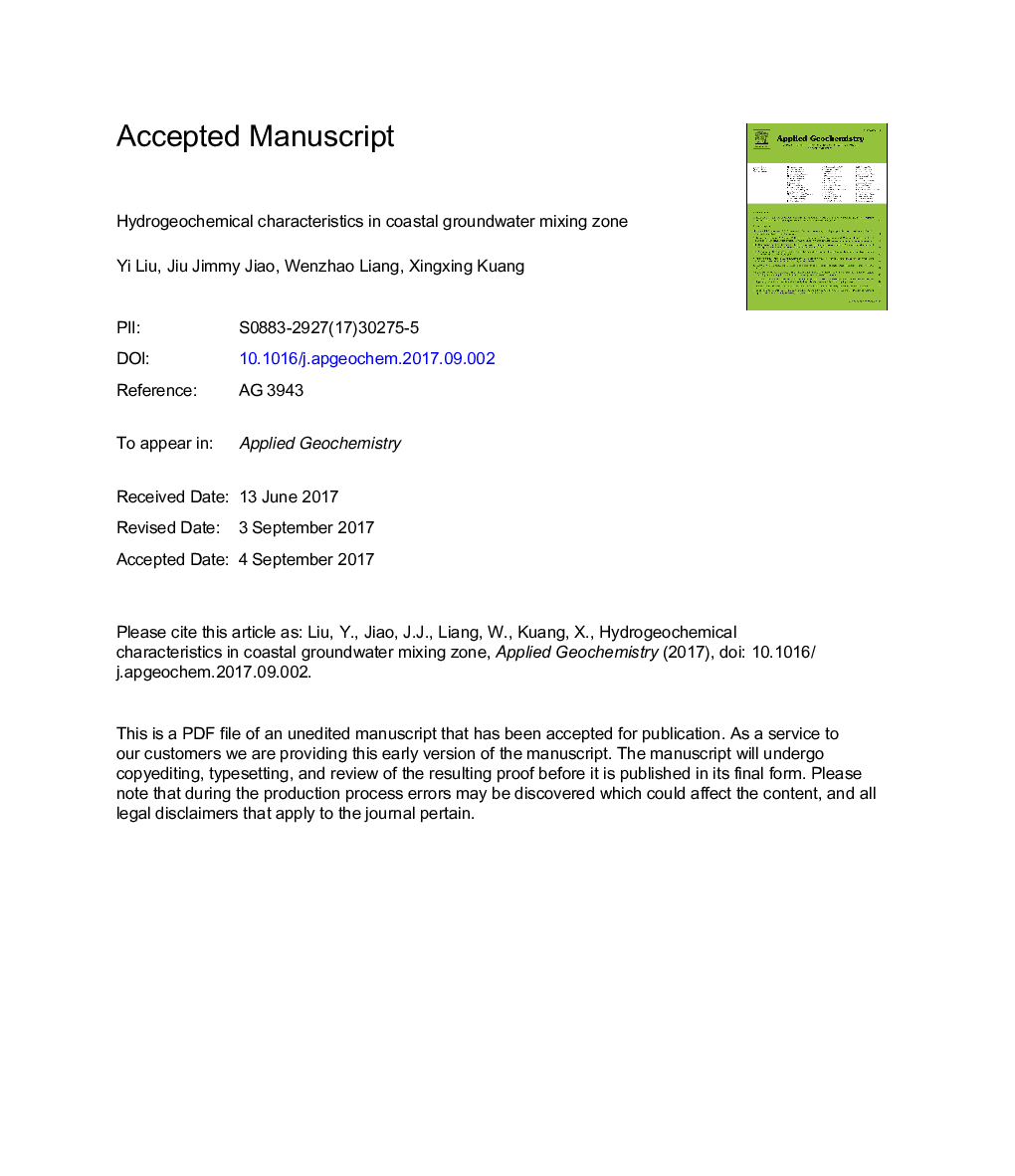| Article ID | Journal | Published Year | Pages | File Type |
|---|---|---|---|---|
| 5752444 | Applied Geochemistry | 2017 | 40 Pages |
Abstract
This study presents the hydrogeochemical analysis in coastal groundwater mixing zone of a sandy aquifer, Ting Kok, Hong Kong. Groundwater samples collected along a sampling transection that covers the salinity transition zone were analyzed for spatial and temporal distribution of major ions (Clâ, SO42â, Na+, K+, Mg2+, and Ca2+) and ancillary parameters such as salinity, pH, temperature, and total alkalinity. The seawater-freshwater interface (SFI) based on different ions, ionic delta of major ions, PHREEQC based saturation index (SI) of minerals are used to systematically investigate geochemical processes such as cation exchange, precipitation/dissolution of minerals, and sulfate reduction under the effect of seasonal hydrologic variation. Compared to Clâ-based SFI, the landward movements of cation-based SFI and seaward movement of SO42--based SFI indicate that the coastal aquifer serves as the source of cations and sink of SO42â for groundwater. The SFI is sensitive to seasonal hydrologic variation due to the variation of land-sea hydraulic gradient. The cation exchange and precipitation/dissolution of minerals are dynamic and complex in coastal groundwater mixing zone. The simultaneous enrichment of all cations is found in the aquifer due to external input of a specific cation. The sulfate reduction is responsible for SO42â depletion and also the enrichment of total alkalinity in coastal groundwater mixing zone because gypsum precipitation does not occur according to mineral SI analysis. The cation exchange is very sensitive to the seasonal hydrologic variation while the sulfate reduction is not obviously influenced.
Related Topics
Physical Sciences and Engineering
Earth and Planetary Sciences
Geochemistry and Petrology
Authors
Yi Liu, Jiu Jimmy Jiao, Wenzhao Liang, Xingxing Kuang,
